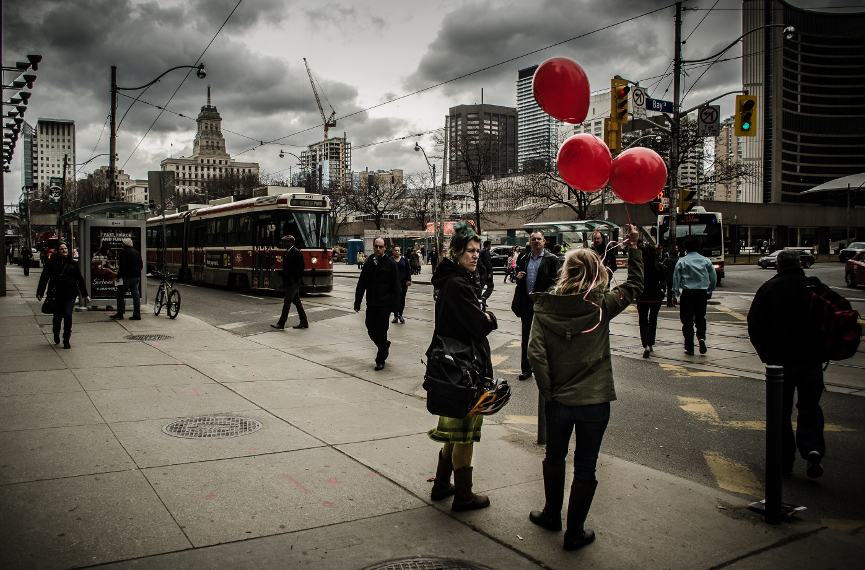Street Photographers Things To Know Before You Get This
Street Photographers Things To Know Before You Get This
Blog Article
A Biased View of Street Photographers
Table of ContentsGetting The Street Photographers To WorkThe Buzz on Street PhotographersThe Only Guide for Street PhotographersStreet Photographers for BeginnersThe Buzz on Street Photographers
, a style of digital photography that records daily life in a public location. The very publicness of the setup makes it possible for the photographer to take candid photos of unfamiliar people, typically without their expertise. Street digital photographers do not necessarily have a social purpose in mind, yet they like to separate and record moments which might or else go unnoticed.He was influenced by several of those who influenced the street digital photographers of the 1950s and '60s, he was not chiefly interested in catching the spirit of the road., who functioned side by side with digital photographers attempting to capture the significance of city life.
As a result of the somewhat primitive innovation readily available to him and the lengthy direct exposure time called for, he had a hard time to capture the stress of the Paris streets. He trying out a collection of photo approaches, trying to find one that would allow him to catch movement without a blur, and he found some success with the calotype, patented in 1841 by William Henry Fox Talbot. In comparison to Atget, digital photographer Charles Marville was worked with by the city of Paris to create an encyclopaedic paper of Haussmann's metropolitan planning project as it unfolded, therefore old and new Paris. While the professional photographers' subject was essentially the exact same, the results were substantially various, demonstrating the influence of the photographer's intent on the character of the images he generated.
About Street Photographers
Given the great high quality of his photos and the breadth of product, designers and musicians usually got Atget's prints to make use of as recommendation for their own job, though industrial passions were hardly his main motivation. Instead, he was driven to photo every last residue of the Paris he enjoyed. The mingled passion and necessity of his mission luster through, resulting in pictures that narrate his very own experience of the city, qualities that prepared for street photography of the 20th century.

Unlike his peers, Brassa used a larger-format Voigtlnder cam with a much longer direct exposure time, requiring him to be extra calculated and thoughtful in his practice than he may have been if using a Leica.

Unknown Facts About Street Photographers
It is due to this fundamental understanding of the art of photo taking that he is commonly credited with rediscovering the medium around once again about a century considering that its development. He took pictures for greater than a half century and influenced generations of digital photographers to trust their eye and instinct in the moment.
These are the questions I will try to address: And after that I'll leave you with my very own interpretation of street photography. Yes, we do. Allow's begin with specifying what an interpretation is: According to it is: "The act of defining, or of making something definite, distinctive, or clear".
No, definitely not. The term is both limiting and misdirecting. Appears like a street photography should be images of a streets ideal?! And all street digital photographers, with Visit Your URL the exception of a handful of outright newbies, will fully appreciate that a street is not the essential component to street digital photography, and really if it's an image of a great post to read street with maybe a few boring people not doing anything of interest, that's not street digital photography that's a picture of a road.
Some Ideas on Street Photographers You Need To Know
He makes a valid factor do not you believe? Nonetheless, while I concur with him I'm not exactly sure "honest public photography" will catch on (although I do type of like the term "candid photography") since "street digital photography" has been around for a long period of time, with numerous masters' names affixed to it, so I believe the term is right here to stay.
Inside?! I hear you scream as you drink your fist to the skies. Why not? You his explanation can shoot at the beach, at a celebration, in a street, in a park, in a piazza, in a coffee shop, at a gallery or art gallery, in a city terminal, at an event, on a bridge, under a bridge ...
Yes, I'm worried we have no choice! Without regulations we can not have a definition, and without a definition we don't have a style, and without a style we do not have anything to define what we do, therefore we are stuck in a "guidelines definition genre" loophole! And no-one desires to get stuck in a loophole. - Street Photographers

Report this page